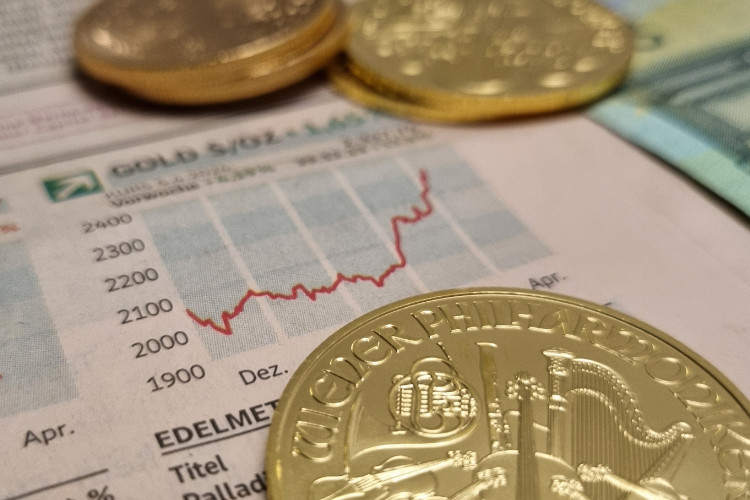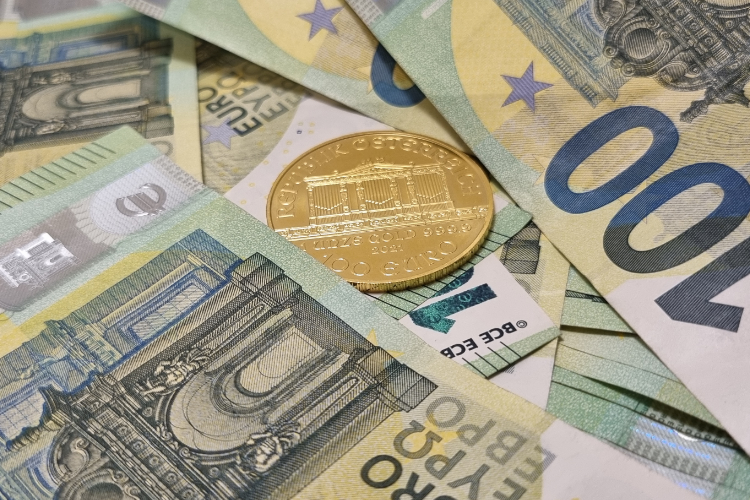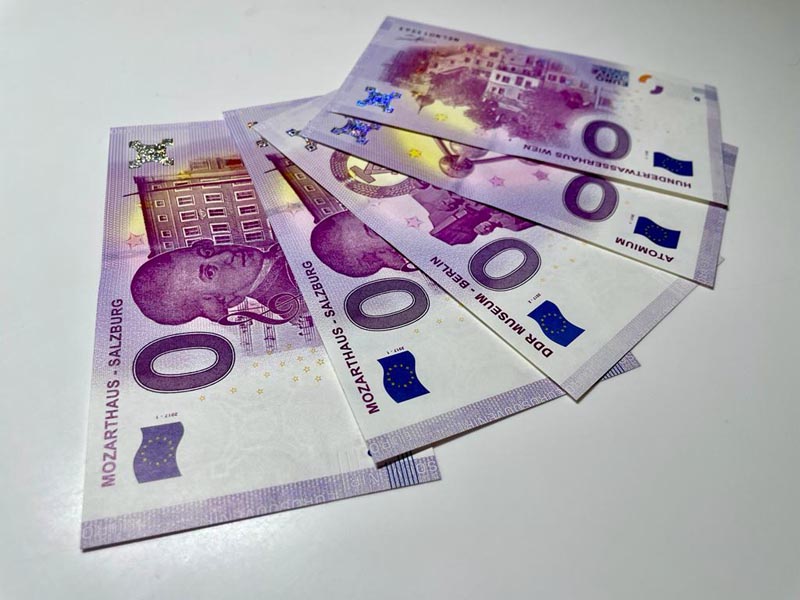
Inflation has been going through the roof in almost all industrialized countries for a year now. In the euro zone, the inflation rate was 9.1% in August, and in some member countries it is already in double digits. In the USA, too, the rate was recently still at 8.3%.
Shouldn't gold actually be the protection against inflation? However, the price of gold is not rising, but has been hovering between 1700 and 1800 dollars for months. Most recently, the price even slipped below the mark of 1650 dollars / troy ounce.
Monetary policy: the rude awakening
Although the energy crisis in the wake of the Ukraine war and the aftermath of Corona-related supply chain disruptions may also play into inflation, the main reason for high inflation is monetary policy over the past decade.
In order to cope with the financial crises that began in 2008 - the banking crisis, the sovereign debt crisis, the euro crisis - central banks everywhere pursued an expansionary monetary policy. A policy that culminated in negative interest rates and purchase programs.
While the U.S. Federal Reserve was the first to be forced to lower key interest rates, the other central banks, especially the ECB, were also forced to cut rates. After the U.S. dollar established itself as the reserve currency after Bretton Woods, they wanted to maintain the exchange rate against the dollar as far as possible.
As a second measure, the banks relied on "quantitative easing" (QE). This means nothing other than that money was created out of nothing, lent to commercial banks and support purchases were made of government bonds and large companies ("too big to fail"). This quantitative easing led to a swelling of the money supply. However, since the money created only worked in the financial economy and did not reach the real economy, the latter was unable to benefit from the financial injection. For the same reason, however, citizens did not feel any inflation either.
In order to stimulate the real economy and prevent deflation, from 2008 onward, the U.S. repeatedly considered simply transferring money directly to every citizen's account. However, this "helicopter money" was not implemented, probably also because it would have called people's trust in the government and the banks into question.
However, this was done a few years later - after a Corona crisis lasting more than two years, the massive aid and support programs pumped money into the real market for the first time. In the meantime, we have now arrived at helicopter money (= direct transfer payments, such as climate and anti-inflation bonuses) after all.
These measures created money out of nothing, which inflated the money supply enormously. And if there is always more of something, the logical development is that the value of this thing falls. This is also true for money.
From hesitant interest rate turnaround to aggressive rate hike

Central banks on both sides of the Atlantic are now trying to counteract this by raising key interest rates and scaling back their bond purchases. However, the fact that there has been a shift from the initially hesitant turnaround in interest rates to a rather aggressive interest rate policy shows how serious the situation is and how desperately the central banks are reacting.
Whereas in the past central banks usually set interest rate hikes in the range of 0.25 percentage points, the most recent increases by the FED and the ECB were 0.75 points each.
In the current year 2022, the US Federal Reserve has already raised the key interest rate five times and holds out the prospect of further increases. At the end of September, the U.S. key interest rate will thus stand at 3.25%. The ECB also raised its key rate in mid-September by 0.75 percentage points to 1.25%, the second increase in succession.
However, an increase in the key interest rate always makes credit more expensive, thus reducing demand and slowing down the economy. That's why interest rate hikes are always accompanied by the risk of a recession or a worsening of one. And while the U.S. economy is already contracting, almost all experts see Europe sliding into recession in the coming months. The effects of the energy crisis are contributing to the decline of the European economy.
Why is the price of gold declining?
However, the reason for the stagnating or declining gold price is primarily interest rates, which are now being used to fight inflation. If other, similarly safe forms of investment promise an interest yield, these become more attractive for investors than interest-free precious metal investments.
Government bonds of countries with good credit ratings, for example, are considered to be a "safe haven" similar to gold. Because interest rates on these bonds are currently rising - 10-year U.S. bonds yield 3.8%, German bonds 2.1% and Austrian bonds 2.75% - their attractiveness is increasing. The consequence is a lower demand for precious metals and thus a negative impulse for the gold price.
Another important circumstance for the gold price development is the positioning of the short sales of the five big banks in the USA. These are published every week in the so-called COT report. These short sales can best be compared with bets on a price development. Whereby - as a pleasant side effect for these big players - these bets directly influence the gold price. Especially since the gold price is no longer determined by the London Fixing, but by the Gold Spot, which is calculated from supply & demand, as well as from the short sales.
Why the physical demand nevertheless plays a subordinate role in the price formation is probably due to the fact that every physically, real existing ounce is countered by about one hundred and forty (140 !!!) ounces in the form of short sales and influence the price.
A rogue who thinks evil 😉
Gold: What price development can be expected?
If interest rates continue to rise sharply, this is likely to depress the price of gold. The price could fall to 1500 dollars or even lower.
At the same time, however, the price of gold could move upward again and return to the $2,000 per troy ounce level.
Many analysts believe that the recent sell-off in gold is exaggerated. Because of the risk of completely stalling the economy and letting the recession slide (or worsening it), the central banks could turn the interest rate screw less sharply than they would like.
As soon as the central banks hesitate with further interest rate hikes if inflation remains high, investors could quickly find interest in gold again.
Because the production of the mines is also declining thanks to higher extraction costs, increased demand could then quickly lead to a sharp rise in the price of gold.
Euro-Dollar Interaction on the Gold Price
Für Gold Fans in Europa muss es aber nicht automatisch heißen, dass z.B. der Wiener Philharmoniker automatisch billiger wird, nur weil der Goldpreis fällt.
Since gold is traded and priced in U.S. dollars, the relationship between the euro and the U.S. dollar is also important for us in Europe with regard to the gold price.
Thus, it is even possible that the price of gold in U.S. dollars will fall while remaining the same or even becoming more expensive for buyers in Euroland.
A scenario that in my opinion could even be very likely, as the European export engine, above all Germany, could not only stutter in the environment of the Ukraine crisis, the Russia sanctions and the horrendous (up to 600%!!) increase in energy costs, but even come to a standstill in some cases.
If another crisis comes along(Credit Suisse is teetering and threatens to become a new Lehman Brothers), in an environment of economic and social uncertainty, the population's distrust of the state, the banks and the currency can rise quickly and lead to a withdrawal of savings from the monetary system. Then gold could quickly become scarce and the gold price could even split: Into a gold price on the stock exchange and a price for physical gold charged by someone who still has physical gold during high demand.
"Time in the market beats timing the market."
Should I buy gold as an investment now? Yes, especially if you consider your gold investment as a long-term investment. Because even though gold does not yield interest, in the past it has always been able to compensate for the continuous depreciation of money in the long run.
For example, an analysis of Bloomberg data on gold showed that the yellow metal has yielded an average annual return of 8% over the past twenty years. We therefore always advise holding 10-30% of available assets in precious metals as an inflation hedge.
As a short-term, speculative investment, gold and other precious metals are especially for beginners but not suitable! If the gold price now goes back, this can be a favorable opportunity to enter, but to meet the optimal time for the purchase of gold remains difficult.
If you want to buy gold as security or for long-term asset accumulation, experts advise you to buy smaller amounts of gold at regular intervals. With this buying behavior you can - without having to constantly monitor the gold price - optimally compensate for price fluctuations.










